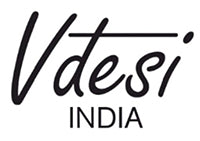Why is demand for synthetic leather replacing genuine leather?
Why synthetic leather (also known as faux leather) is becoming preferable alternative to genuine leather?
1. Cost:
Synthetic leather is generally less expensive to produce than genuine leather, making it a more affordable option for consumers who want a leather-like look and feel without the high price tag.
- Durability:
Synthetic leather can be more durable than genuine leather in some cases, as it is less prone to cracking and fading over time. It does not absorb water unlike leather, hence is more resistant to stains and water damage. Though it should be noted, faux leather is not as strong as genuine leather.
- Animal welfare:
With increasing realization for animals Synthetic leather is an ethical choice for those who are concerned about animal welfare, as it is not made from animal hides.
- Sustainability:
Synthetic leather can be made from sustainable materials, such as recycled plastics, which can help reduce waste and pollution. The process of producing synthetic leather, is not as tedious as leather. Base materials like polyurethane (PU), polyvinyl chloride (PVC), and polyester are easily available.
- Versatility:
Synthetic leather can be produced in a wider range of colors and textures than genuine leather, allowing for more design options.
- Environment friendly:
Synthetic leather does not require as much land, water and no use of animals for production. The process of coating: Coloring and finishing is much cleaner as compared to genuine leather.
Why is genuine leather bad for the environment?
Negative impacts of animal leather on the environment in several ways:
- Land use: The production of genuine leather requires large amounts of land for grazing animals, which contributes to deforestation and habitat loss.
- Water use: The leather tanning process requires large amounts of water, which can lead to water scarcity and pollution of nearby water sources.
- Chemicals: The leather tanning process involves the use of various chemicals, such as chromium and formaldehyde, which can be toxic to both humans and the environment, if not handled properly.
- Waste: The leather industry generates a significant amount of waste, including animal waste, wastewater from the tanning process, and leftover leather scraps. These can contribute to pollution and waste management problems.
- Carbon footprint: The production and transportation of leather products can contribute to greenhouse gas emissions and climate change.
It's worth noting that not all leather production has the same environmental impact, as some producers may use more sustainable and responsible practices than others. However, overall, the production of genuine leather can have significant negative impacts on the environment.
A good message to encourage using animal friendly products
Choosing animal-friendly products is not only a compassionate choice, but also a way to promote a healthier and more sustainable world for all. By choosing products that are free from animal testing and cruelty, we can help protect the well-being of animals and promote a more ethical and responsible society. Not only that, but animal-friendly products are often made with sustainable materials and production practices, which can help reduce our impact on the environment and promote a more sustainable future. So, let's make the conscious choice to choose animal-friendly products and do our part to create a better world for all beings.
Message from Vdesi
We at Vdesi follow a conscious compassionate approach to create only animal friendly products for women, handbags and accessories. We believe fashion is rejuvenating, beautiful and full of life, whereas the roots of leather start with ending the beauty of life. Vdesi takes immense inspiration from the beauty of nature and encourages its preservation. The role of leather in fashion is, in many ways not as important for these reasons in our opinion.
- Fashion is ever changing and does not require products to last a lifetime.
- If maintained well, PU or PVC leatherette can have a longer shelf life.
- The strength required to create bags, belts and other fashion accessories is well sufficed by faux leather.
-
Synthetic leather is available in more variety of prints, textures and colors, plus is way cheaper than leather.
Our little motto towards fauna is a message that says,
More Fashion
Less Guilt

